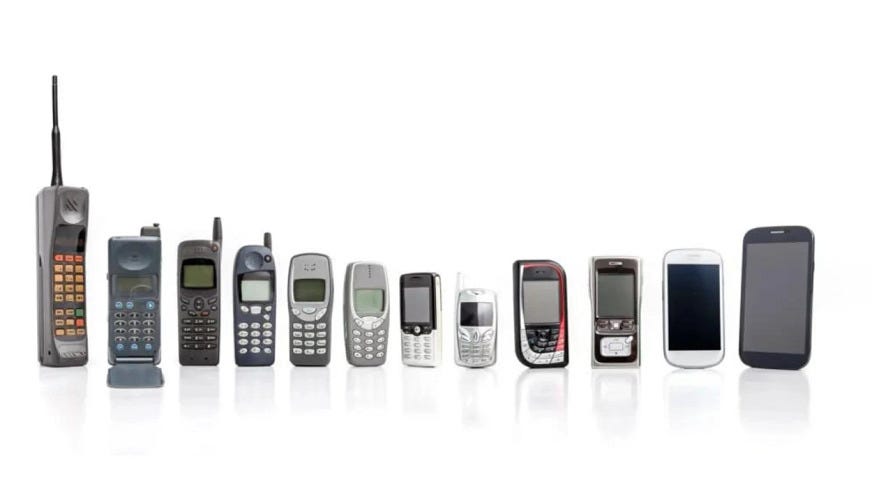

The invention of the first automobile phones in the middle of the 20th century marked the beginning of the idea of mobile communication. These early gadgets were heavy, expensive, and very different from modern portable gadgets. They effectively acted as blocks with constrained functionality.
The development of cellular technology during the 1970s and 1980s made mobile communication more feasible. Despite their high price and short battery life, gadgets like the Motorola DynaTAC 8000X were popular. The era of the mobile revolution has just begun.
In the 1990s, mobile phones entered the mainstream thanks in large part to Nokia's legendary phones like the 3310 and 5110. These phones offered simple text messaging, customizability, and entry-level games. They developed the model for mobile communication.
The smartphone first appeared in the 2000s. Devices like the BlackBerry and Palm Treo integrated personal information management and mobile communication. They provided access to calendars, email, and basic web browsing.
The first-generation iPhone, released by Apple in 2007, was the catalyst for a revolution in the smartphone market. The iPhone was a user-friendly and adaptable device because it blended a modern design with a multi-touch interface. It revolutionized the way we used technology and ushered in a new era of mobile computing.
Invading the market with a more flexible and open platform than Apple's iOS, Google's Android operating system put iOS to the test. Due to Android's adaptability, manufacturers were able to produce a variety of devices, offering customers additional choices and fostering competition and innovation.
The way we use smartphones has been transformed by both Google Play and Apple's App Store. These platforms provided a large range of applications that transformed smartphones into tools for entertainment, productivity, and many other purposes.
Smartphones have evolved into sophisticated photographic tools in recent years because of their multiple and triple camera setups, AI-driven improvements, and amazing low-light performance. They have changed how we capture and share our experiences as well as the photography profession.
Foldable smartphones are now pushing the limits of smartphone design, such as the Samsung Galaxy Z Fold and Z Flip. Larger screens and cutting-edge form factors on these gadgets open up new possibilities for both entertainment and productivity.
The development of smartphones is still going strong as we look to the future. Smartphones will become even more ingrained in our daily lives as a result of developments in 5G, augmented reality, and artificial intelligence.











